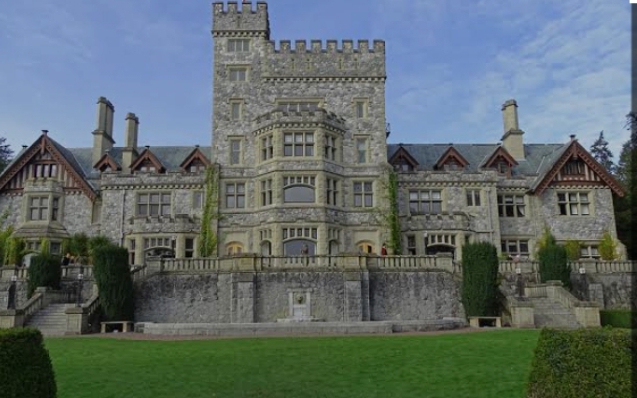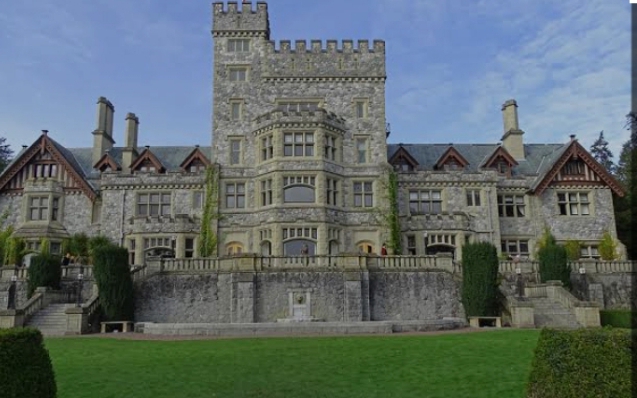Introduction about studying medicine in Canada.

Studying medicine in Canada is a dream for many international students, thanks to the country’s world renowned healthcare system and top tier medical schools. The journey to becoming a doctor in Canada is both challenging and rewarding, requiring dedication, resilience, and a deep commitment to helping others. This comprehensive guide will cover each step needed to study medicine in Canada from pre medical education requirements to applying for medical school, gaining licensure, and finding employment after graduation.
Canada offers a robust medical education system recognized for its emphasis on both scientific knowledge and practical skills. For international students, understanding the application process, eligibility requirements, and the necessary exams is crucial to successfully pursuing this career path. Additionally, tuition costs, student visa requirements, and residency opportunities post-graduation are important considerations when planning for a medical education in Canada.
Why Study Medicine in Canada?
Canada is an attractive destination for aspiring doctors, offering a blend of high-quality education, advanced medical technology, and a strong healthcare system.
1. High Quality Medical Education
Canadian medical schools consistently rank among the best globally, with programs that focus on both theoretical knowledge and practical skills. The medical curriculum is rigorous, emphasizing problem-based learning, critical thinking, and hands on clinical training to ensure graduates are well-prepared for the challenges of a medical carrier.
2. Diverse and Inclusive Healthcare Environment
Canada’s healthcare system is known for being inclusive and accessible. Medical students in Canada gain experience treating a wide range of patients from various cultural backgrounds. This exposure prepares students for a global medical career and helps them develop a compassionate, patient centered approach to healthcare.
3. Growing Demand for Healthcare Professionals
Canada’s population is aging, leading to an increased demand for healthcare services and qualified medical professionals. International graduates who complete their residency and obtain licensure in Canada often find a wealth of job opportunities, especially in underserved regions and specialty.
4. Pathways for Permanent Residency Canada offer
Canada offers pathways to permanent residency for international graduates who have completed medical training within the country. Programs such as the Post Graduation Work Permit (PGWP) and pathways through Express Entry can make it easier for international students to stay in Canada after their studies.
5. Access to Advanced Medical Facilities
Many Canadian medical schools are affiliated with research hospitals equipped with state-of-the-art medical technology. Students have the opportunity to learn in cutting-edge facilities, participate in research, and work with innovative healthcare solutions, enhancing their training and career prospects.
Choosing Canada for medical studies can be a strategic decision for those aiming to practice medicine a well regarded healthcare system. With a supportive academic environment, strong job market, and the chance to become a permanent resident, Canada offers a promising future for international medical students.
Canada’s medical education system is designed to develop skilled, knowledgeable, and compassionate doctors ready to meet the demands of modern healthcare. This system includes multiple stages, each with its own set of requirements and challenges, preparing students to handle various clinical situations effectively.
1. Undergraduate Pre-Medical Education
in Canada, students typically need to complete a pre-medical undergraduate degree before applying to medical school. Unlike some countries where medical programs are available right after high school, Canadian medical schools require a foundational degree (often in sciences, like biology or chemistry) as part of the eligibility criteria.
2. Doctor of Medicine (MD) Program
Pre Clinical Years: During the first two years, students focus on classroom-based learning, covering foundational medical sciences like anatomy, physiology, biochemistry, and pharmacology.
Clinical Years: The final two years emphasize clinical rotations, where students work directly with patients under supervision.
3. Licensing Examinations
throughout their medical education and after graduation, students must pass several licensing exams to practice medicine in Canada. These exams, administered by bodies like the Medical Council of Canada (MCC), assess a candidate’s medical knowledge, clinical skills, and readiness for independent practice.
4. Residency Training
after earning an MD degree, graduates enter a residency program, which provides in-depth, specialized training in a chosen field, such as internal medicine, surgery, or family medicine. Residency training can last between two to seven years, depending on the specialization. During this period, residents gain practical experience while working under licensed physicians.
5. Certification and Full Licensure
Upon completing residency, doctors must obtain certification from a recognized medical body, such as the Royal College of Physicians and Surgeons of Canada (RCPSC) for specialists or the College of Family Physicians of Canada (CFPC) for family medicine. Certification is the final step before a physician can practice independently

Step 1: Pre-Medical Requirements
Before applying to medical school in Canada, international students need to fulfill several pre-medical requirements. These prerequisites are essential to ensure that applicants have a strong foundation in sciences and other relevant subjects, preparing them for the rigorous medical curriculum. Here’s a breakdown of the key pre-medical requirements.
1. Educational Prerequisites
Most Canadian medical schools require applicants to have completed a bachelor’s degree, ideally in a field related to science. While a specific major is usually not mandated, degrees in biology, biochemistry, or health sciences are often recommended as they cover many relevant subjects. A high GPA, typically above 3.0 or its equivalent, is also essential to be competitive.
2. Recommended High School Subjects
For students planning their educational path early, it’s beneficial to focus on science courses in high school. Subjects like biology, chemistry, physics, and mathematics are particularly useful for building a solid foundation. English is also critical, as strong communication skills are necessary for success in medical school and clinical settings.
3. Entrance Exams Required
This standardized exam assesses an applicant’s knowledge in biology, chemistry, psychology, and critical analysis. It is widely used to evaluate a candidate’s readiness of the academic demands of medical school. Preparing for the MCAT well in advance is recommended, as high scores can significantly strengthen an application.
4. Additional Prerequisites
It’s essential for students to research each medical school’s requirements, as they can vary between institutions. Certain schools may also require documented volunteer experience in healthcare or community service, as this demonstrates a commitment to patient care and compassion.
Step 2: Applying to Medical School in Canada
The application process for medical schools in Canada is competitive, and international students must carefully prepare each part of their application to increase their chances of acceptance. Here’s an outline of the key steps involved in applying to Canadian medical schools;
1. Application Process for worldwide Students
Canadian medical schools typically use the Ontario Medical School Application Service (OMSAS) for applications to Ontario-based schools, while other provinces may have their own application systems. International students should confirm that the medical schools they are interested in accept applications from non-Canadian citizens, as not all institutions do. It’s essential to follow each school’s specific guidelines for international applicants;
2. Key Deadlines and Timelines
Application deadlines vary by school; with most falling between October and November for programs starting the following fall. Early preparation is crucial, as gathering documents, writing personal statements, and preparing for interviews can take time. Additionally, applicants should allow time for their MCAT scores and any other required exams to be submitted.
3. Documents Required for Admission
Medical schools in Canada require several key documents as part of the application package, including;
Official Transcripts: Transcripts from all post-secondary institutions attended, showing a history of academic performance.
MCAT Scores: Many schools require an official MCAT score report.
Letters of Recommendation: These letters should come from professors, healthcare professionals, or supervisors who can speak to the applicant’s academic ability, character, and potential as a future doctor.
Personal Statement: The personal statement is an opportunity for applicants to express their motivation for studying medicine, any relevant experiences, and their career goals.
Proof of English Language Proficiency: For students from non-English-speaking countries, proof of English proficiency (such as TOEFL or IELTS scores) is often required.
4. Interviews
Canadian medical schools often use the Multiple Mini Interview (MMI) format, which involves rotating through several short interview stations, each with a unique scenario or question. This process helps evaluate a candidate’s critical thinking, communication skills, ethical reasoning, and ability to handle diverse situations.

Step 3: Medical School Structure in Canada
Understanding the structure and requirements of Canadian medical schools can help international students anticipate the academic demands and timelines of their education.
- Overview of the Medical Curriculum
Pre-Clinical Years (Years 1–2): The first two years focus on classroom-based education, covering foundational subjects such as anatomy, physiology, pathology, pharmacology, and medical ethics. These courses help students build essential knowledge in medical sciences and prepare for clinical practice. - Clinical Years (Years 3–4): During the final two years, students engage in clinical rotations, which involve hands-on training in various medical specialties, such as surgery, pediatrics, internal medicine, and psychiatry. These rotations allow students to work with patients and learn from experienced doctors in a real-world setting.
- Clinical Rotations and Practical Training
Clinical rotations are a vital part of medical education in Canada. Students gain supervised experience in multiple fields of medicine, rotating through various departments in hospitals and healthcare facilities. These rotations allow students to apply their knowledge to diagnose and treat patients, develop bedside manner, and understand the day-to-day responsibilities of different medical specialties. Some programs also include rural placements, providing experience in underserved areas. - Duration and Cost of Medical Education
Medical education in Canada typically spans four years, followed by a residency program (which varies in length depending on specialization). The cost of medical school in Canada can be significant, particularly for international students, who often face higher tuition rates than Canadian citizens. - Tuition Costs: The annual tuition fees for international students in Canadian medical schools range from CAD 40,000 to CAD 100,000. Some programs also require additional fees for textbooks, lab supplies, and other resources.
- Additional Expenses: Beyond tuition, students should consider the cost of living, health insurance, and other expenses. Some medical schools offer scholarships and financial aid for international students, but these can be limited, so it’s essential to plan and explore funding options early.
Step 4: Exams, Licensing, and Certifications
To practice medicine in Canada, medical graduates must pass a series of licensing exams and obtain certifications from recognized medical bodies. This step is critical to ensure that doctors meet the national standards of medical knowledge, skills, and professionalism required for safe patient care.
- Required Licensing Exams in Canada
There are several key exams that medical graduates must pass to obtain licensure in Canada: - Medical Council of Canada Qualifying Examination (MCCQE): The MCCQE is a two-part exam required for medical licensure.
- Certification Bodies and Exams After Graduation
After completing medical school and passing the necessary exams, graduates must obtain certification from a recognized medical body to practice in Canada: - Royal College of Physicians and Surgeons of Canada (RCPSC): This body certifies specialists. Physicians aiming to specialize in fields like surgery, internal medicine, or pediatrics must complete a residency program and pass exams administered by the RCPSC.
- College of Family Physicians of Canada (CFPC): This body certifies family physicians. Graduates interested in family medicine must complete a two-year family medicine residency program and pass the CFPC exam to obtain certification.
- Licensing with Provincial Medical Regulatory Authorities
once certified, physicians must apply for licensure with the regulatory authority in the province or territory where they wish to practice. Each province has its own requirements, so it’s essential for graduates to familiarize themselves with the specific processes in their chosen location.
Step 5: Post-Graduation Pathways
After graduating from medical school, international students in Canada enter a crucial phase that includes internships, residency training, and, for those who wish, further specialization. Each stage builds practical experience and expertise in a chosen field of medicine, leading to full medical licensure.
1. Internship and Residency Programs in Canada

Residency training is essential for medical graduates to gain in-depth knowledge and hands-on experience in their chosen specialty. Residency programs vary in length, typically ranging from 2 to 7 years depending on the field (e.g., family medicine takes about 2 years, while specialties like neurosurgery may take up to 7 years).
Matching Process: To secure a residency, graduates must apply through the Canadian Resident Matching Service (Crams). This competitive process matches applicants to residency programs across Canada based on their qualifications, preferences, and interviews.
Residency Structure: During residency, graduates work in hospitals and healthcare facilities under the supervision of licensed physicians, gradually taking on more responsibility. They receive hands on training, participate in patient care, and refine their clinical skills.
2. Steps to Achieve Full Medical Licensure
Following the successful completion of a residency program and passing required exams, graduates are eligible to apply for full medical licensure in their chosen province. Provincial medical regulatory authorities set licensure requirements, which may include:
Passing the Medical Council of Canada Qualifying Examination (MCCQE) Part II (if not already completed).
Submitting proof of residency completion and certification from the Royal College of Physicians and Surgeons of Canada (RCPSC) or the College of Family Physicians of Canada (CFPC), depending on the specialty.
3. Specialization and Further Training Options
For those interested in advanced specialties, further training through fellowships is an option. Fellowship programs allow physicians to develop expertise in highly specialized fields, such as cardiology, oncology, or pediatric surgery. These programs can last 1–3 years and often lead to increased career opportunities and higher earning potential.
Post-graduation pathways are designed to help medical graduates transition smoothly into independent practice, ensuring they are fully prepared for the responsibilities of patient care. Completing residency and securing licensure are major steps toward a successful medical career in Canada, while further specialization offers opportunities for personal and professional growth in specific medical fields.
Cost of Studying Medicine in Canada
Understanding the cost structure of a medical education in Canada can help students plan their finances and explore available funding options.
1. Tuition Fees for Medical Schools in Canada
Tuition fees for international students in Canadian medical schools vary widely based on the institution and province.
Public vs. Private Medical Schools: Tuition rates can differ based on whether a school is publicly funded or privately operated. Most Canadian medical schools are publicly funded, and although costs may still be high for international students, these institutions tend to be more affordable than private schools.
Additional Fees: Aside from tuition, medical schools may require fees for lab access, technology, student services, and exam materials, which can add several thousand dollars annually.
2. Cost of Living, Scholarships, and Financial Aid Options
In addition to tuition, students must budget for living expenses, which vary depending on the location. Major cities like Toronto and Vancouver have a higher cost of living than smaller cities or towns.
Cost of Living: On average, students should budget CAD 12,000 to CAD 20,000 per year for rent, food, transportation, and other essentials. Health insurance is also required for international students and typically costs around CAD 600–900 annually.
Scholarships and Financial Aid: While financial aid for international students is limited, some medical schools offer scholarships based on merit or financial need. Organizations like the Canadian Commonwealth Scholarship Program and specific provincial programs may offer funding options, though these opportunities can be competitive. Additionally, international students may explore private student loans or support from home-country financial institutions.
3. Additional Expenses
Students may need to budget for textbooks, clinical supplies, licensing exam fees, and professional memberships.
By understanding the financial aspects of studying medicine in Canada, students can plan accordingly, minimize debt, and explore scholarships and financial aid options. Thorough planning is essential to manage the expenses associated with a medical education, making it easier for international students to focus on their studies

Visa Requirements for International Medical Students
- For international students wishing to study medicine in Canada, obtaining the proper visa is a crucial step. Canada has specific visa requirements for students pursuing higher education, including those enrolled in medical programs.
- : Student Visa Process for Canada
- Acceptance Letter: Before applying for a study permit, students must secure an acceptance letter from a recognized Canadian institution.
- Apply for a Study Permit: After receiving the acceptance letter, students can apply for a study permit through the Government of Canada’s online portal or at a Canadian visa office. The application requires proof of identity (passport), acceptance letter, and proof of financial support.
- Proof of Funds: Applicants must show they have sufficient funds to cover tuition, living expenses, and return transportation. Generally, students need to prove access to CAD 10,000–12,000 per year in addition to tuition fees.
- Biometrics and Medical Exam: Some applicants may need to provide biometrics (fingerprints and photo) and undergo a medical exam as part of the application.
- Work Permit and Post-Graduation Work Opportunities
Canada allows students on study permits to work part-time (up to 20 hours per week) during the academic year and full-time during scheduled breaks. - Post-Graduation Work Permit (PGWP): After completing their medical education, graduates may be eligible for a PGWP, allowing them to work in Canada for up to three years. This work permit provides valuable clinical experience and can be an advantage in obtaining permanent residency.
- Renewing the Study Permit
since medical school can span several years, students may need to renew their study permit before it expires. - Permanent Residency Pathways
many international medical graduates consider obtaining permanent residency (PR) in Canada after their studies. Programs like Express Entry and the Canadian Experience Class (CEC) offer pathways to PR, particularly for graduates with Canadian work experience. Obtaining PR can open more career opportunities and provide benefits like reduced tuition rates in some case.
Career Prospects for Doctors in Canada
Canada offers excellent career opportunities for medical professionals, including both Canadian-trained doctors and international graduates. The demand for healthcare services is high, and the country’s diverse population ensures that doctors have a wide range of career paths to pursue. Below is an overview of the job market, expected salaries, and employment opportunities for doctors in Canada:
- Job Market for Medical Graduates
The job market for doctors in Canada is generally strong, particularly for specialists and family physicians. Due to an aging population and growing healthcare needs, Canada has a continuous demand for healthcare professionals across the country, including both urban and rural areas.
- Urban vs. Rural Opportunities: While larger cities like Toronto, Vancouver, and Montreal offer many opportunities, rural and remote areas are often in greater need of healthcare professionals. Doctors willing to practice in these underserved regions may find more job openings and sometimes receive additional incentives, such as loan forgiveness, higher salaries, or relocation allowances.
- Specialization Demand: Certain specialties, such as geriatrics, psychiatry, radiology, and anesthesiology, are in high demand, with a shortage of practitioners in some regions. Graduates with expertise in these fields may have an easier time securing a position compared to other specialties.
- Expected Salaries and Employment Opportunities
Doctors in Canada earn competitive salaries, although income can vary depending on location, specialization, and experience. Here’s an overview:
- General Practitioners and Family Physicians: Family doctors in Canada typically earn between CAD 150,000 and CAD 250,000 per year, depending on their location and patient load. Those working in underserved areas may earn more due to demand.
- Specialists: Medical specialists, such as surgeons, cardiologists, or oncologists, generally earn higher salaries, ranging from CAD 250,000 to over CAD 500,000 annually, depending on the field and their level of experience.
- Locum and Contract Work: Some doctors choose to work as locum physicians or on contract, which can offer higher pay rates for short-term assignments but may lack the stability of a permanent position.
- Employment Conditions and Benefits
Physicians in Canada enjoy a number of professional benefits, including:
- Public Healthcare System: Canada has a publicly funded healthcare system, meaning that doctors do not need to worry about billing patients directly for most services. Payment is made through provincial health insurance plans.
- Work-Life Balance: Many doctors in Canada report a good work-life balance, especially compared to other countries. Work hours and on-call requirements can vary by specialty, but the structure generally supports family time and personal well-being.
- Job Security: The demand for healthcare professionals ensures job security for Canadian-trained doctors. Physicians are also well-regulated, ensuring high standards of practice and continuous professional development.
Conclusion
Studying medicine in Canada offers international students a high-quality education, diverse career opportunities, and the chance to make a meaningful contribution to healthcare. While the process is rigorous and requires careful planning, the rewards are well worth the effort.
- Key Takeaways for Aspiring Doctors
- Academic Excellence: To become a doctor in Canada, students must meet strict academic requirements, including completing a bachelor’s degree with a focus on science, achieving high MCAT scores, and successfully navigating the competitive application process.
- Rigorous Training: Medical education in Canada is comprehensive, with a focus on both theoretical learning and hands-on clinical practice. Medical students must complete four years of schooling, followed by residency training, to become licensed physicians.
- Post-Graduation Pathways: After completing medical school, graduates must undertake a residency program, pass licensing exams, and may choose to specialize further through fellowships. The residency process is highly competitive, but it ensures that graduates are fully prepared to practice medicine independently.
- Financial Planning: The cost of studying medicine in Canada can be significant, especially for international students. Careful financial planning, including exploring scholarships, work opportunities, and loans, is crucial to managing tuition and living expenses.
- Career Opportunities: Canada’s healthcare system offers excellent job prospects for doctors, with competitive salaries and various options for practicing in different specialties. There is also a strong demand for medical professionals in rural areas and specialized fields, which can result in higher salaries and additional benefits.
- Resources for More Information
aspiring medical students should take advantage of the many resources available to help them navigate the process of studying medicine in Canada.
- Medical School Websites: Review each medical school’s website for specific entry requirements, tuition fees, and deadlines.
- Canadian Medical Association (CMA): The CMA provides resources and support for medical professionals in Canada.
- Immigration, Refugees and Citizenship Canada (IRCC): The official government site provides detailed information on visa and study permit requirements for international students.
External Link
- Medical Council of Canada (MCC): Link to the official website of the Medical Council of Canada for students to access detailed information about licensing exams and other requirements. Example: To learn more about the MCCQE and other licensing exams, visit the Medical Council of Canada.
- Crams (Canadian Resident Matching Service): Provide a link to Crams for those interested in applying for residency programs. Example: The Crams website offers detailed information on the residency application process for medical graduates.
- Immigration, Refugees and Citizenship Canada (IRCC): Link to the official IRCC page for international students applying for study permits or work visas. Example: For details on applying for a study permit to study medicine in Canada, check the IRCC website.
- Royal College of Physicians and Surgeons of Canada: Link to this site for information on certification exams and training for specialists. Example: Visit the Royal College of Physicians and Surgeons of Canada to explore the certification process for specialists in Canada.
- College of Family Physicians of Canada: Link to the official site for those interested in family medicine certification. Example: Learn more about certification in family medicine through the College of Family Physicians of Canada
